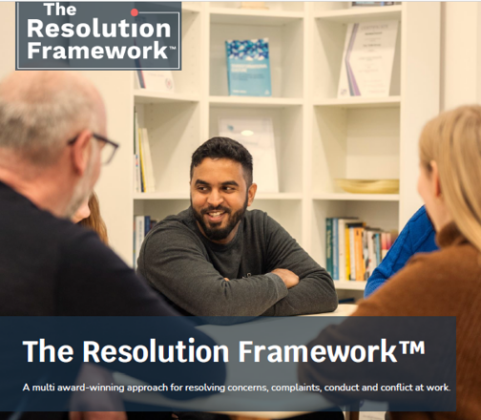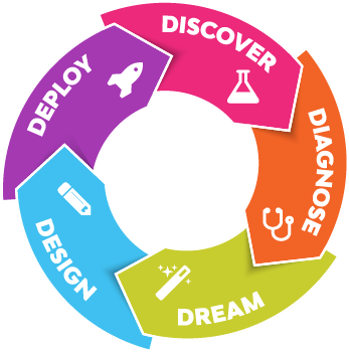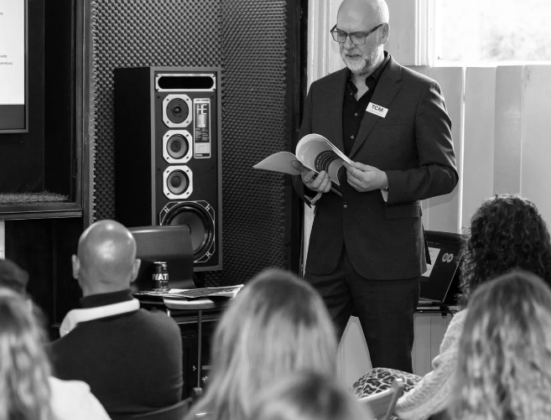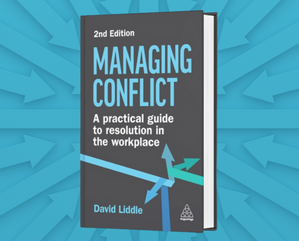This explainer video provides a useful overview of the Resolution Framework™. Our CEO, David Liddle, has also written three bestselling books all of which feature the Resolution Framework™ As well as providing a detailed overview of its design, his books include powerful case studies of its powerful methodology of HR transformation, utilised in organizations as diverse as Burberry, TSB Bank, Nationwide Building Society, Aviva, the NHS, universities, councils and government departments.
The Resolution Framework Process Map™
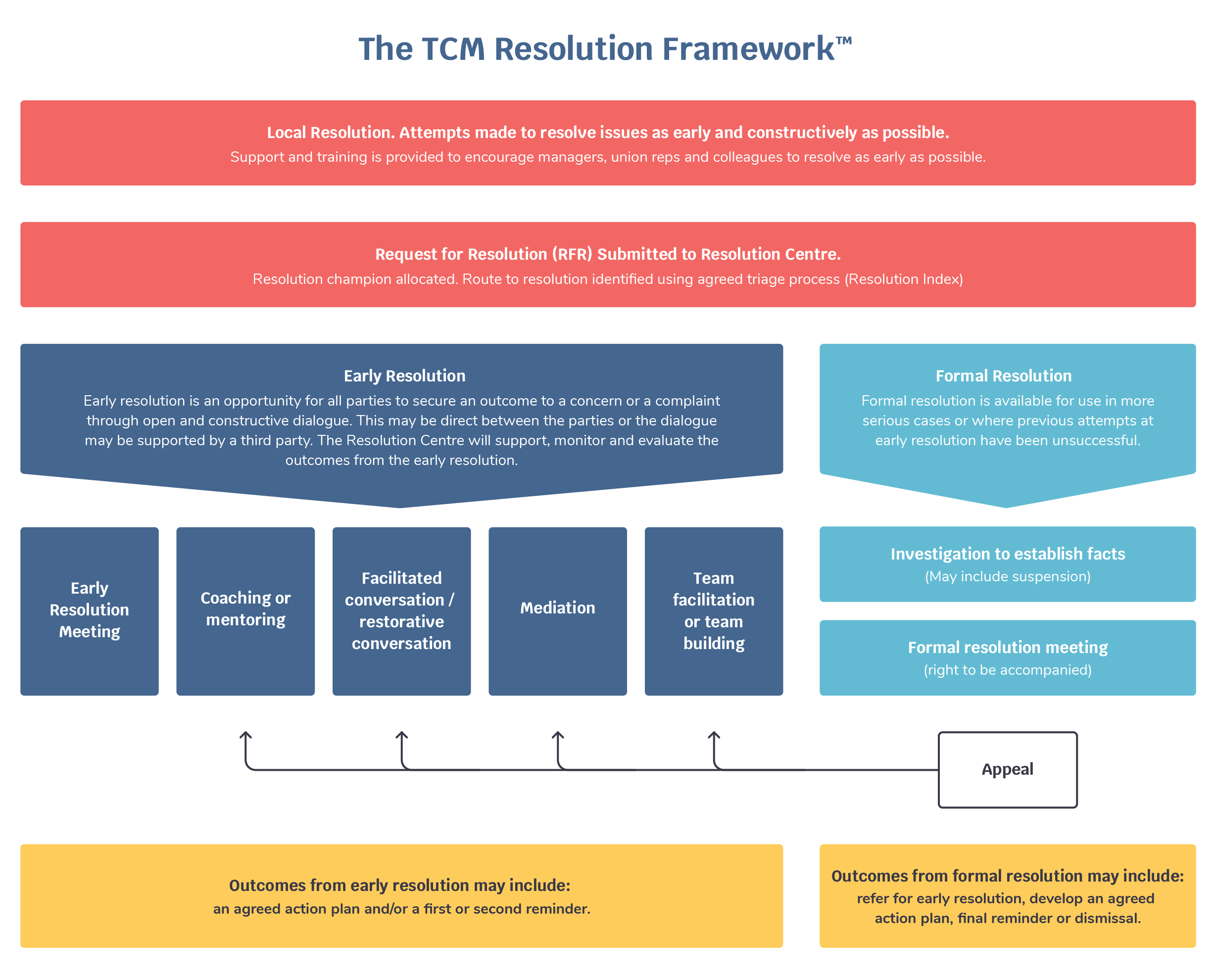
What's different?
This column includes details of new developments which make the Resolution Framework™ so unique:
- A cross functional Resolution Centre is developed to take a strategic oversight of the new Resolution Framework™.
- HR, unions (or employee reps) and managers work together to drive and sustain resolution and the outcome.
- It uses a powerful resolution triage assessment using TCM’s innovative Resolution Index™. The Resolution Index™ offers an objective, structured and consistent decision making process.
- Dialogue is given primacy and there is a significant emphasis on early resolution.
- The Resolution Framework™ links to your core values and agreed behaviours and provides a route map for managers and HR to address poor behaviours quickly and constructively.
- Transformative justice replaces retributive justice. Developed by David Liddle. Transformative Justice (or TJ) is a powerful blend of procedural justice, distributive justice and restorative justice.
- Case reviews and user feedback result in extensive learning and insights used for driving cultural and systems change.
We have also updated much of the language in the process to promote adult to adult dialogue and to make it more inclusive, constructive and supportive.
- Reminders replace warnings.
- Hearings are replaced with resolution meetings.
- Resolution action plans replace performance improvement plans (PIPs)
- A new role to support resolution has been created – Resolution Champions.
What's the same?
This column includes details of the areas of the Resolution Framework™ which retain current practices and provisions:
- The Resolution Framework™ is fully legally compliant plus it is compliant with the Acas code of practice on discipline and grievance procedures (aka The Acas Code).
- People and culture (HR) still have access to detailed audit trails in case of future litigation or court action.
- Ability to investigate and take formal action in serious cases including suspension and dismissal.
- Gross misconduct may still result in dismissal, with or without notice.
- Managers are still expected to take responsibility for managing the situation, albeit there is enhanced coaching and other support available to them through The Resolution Framework™.
- Employees, managers and others still remain accountable for their actions. This is not a process of going soft on bad behaviour. The Resolution Framework™ still holds people to account for the way they behave and the choices that they make.
Working closely with a number of expert legal processionals, we have ensured that absolutely no hard won employment rights have been adversely impacted by the Resolution Framework™:
- Employees have the right to be accompanied throughout the process (barring mediation).
- The entire process is procedurally robust. Unlike traditional disciplinary and grievance procedures where there is very little scrutiny or accountability. The Resolution Framework™ is subject to to full scrutiny via regular case reviews, appeals, user feedback and quality assurance systems developed by The Resolution Centre.
- Employees retain a full right of appeal and the appeals process remain independent and objective from the application of the Resolution Framework™.

‘TCM’s skills, wisdom, experience and insight are immensely valuable and so generously shared. The whole team goes the extra mile in helping us create and deliver a new and exciting approach with their Resolution Framework. We love working with them and love learning from them!

I'd like to know more
Please complete this short form and we will be in touch to arrange an introductory call.

